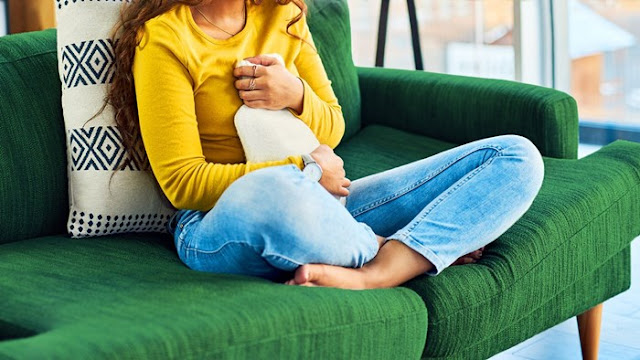Fibroids are noncancerous tumors that grow in the walls of the uterus. They are quite common in women of reproductive age and can cause a range of symptoms, including heavy menstrual bleeding, pelvic pain, and bloating. While fibroids do not always require treatment, some women may experience significant discomfort or complications, and treatment options include medication, surgery, and other procedures.
One common question that arises in relation to fibroids is whether heat or cold is better for managing symptoms. The answer, however, is not straightforward, as both heat and cold can have benefits depending on the specific symptoms a woman is experiencing.
Heat therapy, also known as thermotherapy, involves applying warmth to the affected area to increase blood flow, relax muscles, and alleviate pain. This can be done through the use of hot water bottles, heating pads, or warm baths. Heat therapy can be particularly useful for women who experience menstrual cramps or pelvic pain related to fibroids. By applying heat to the lower abdomen, women can increase blood flow to the area and relax the muscles, which can reduce pain and discomfort.
However, it is important to note that heat therapy is not appropriate for all women or all types of fibroids. For example, if a fibroid is located near the surface of the skin, applying heat to the area may cause skin irritation or burns. Additionally, if a fibroid is particularly large or if a woman is experiencing heavy bleeding, heat therapy may exacerbate symptoms.
On the other hand, cold therapy, or cryotherapy, involves applying cold to the affected area to reduce inflammation, numb pain, and slow down blood flow. This can be done through the use of ice packs, cold compresses, or even frozen vegetables. Cold therapy can be particularly useful for women who experience swelling or inflammation related to fibroids. By applying cold to the affected area, women can reduce inflammation and numb pain, which can improve comfort and mobility.
However, as with heat therapy, cold therapy is not appropriate for all women or all types of fibroids. If a woman has a condition that affects blood flow, such as Raynaud's disease or frostbite, cold therapy may exacerbate symptoms. Additionally, if a woman has sensitive skin, applying cold to the area may cause skin irritation or frostbite.
In general, the choice between heat and cold therapy for fibroids depends on the specific symptoms a woman is experiencing and the location and size of the fibroid(s). Some women may find that a combination of heat and cold therapy is most effective, alternating between the two as needed.
It is important to note that while heat and cold therapy can be effective for managing some symptoms related to fibroids, they are not a substitute for medical treatment. If a woman is experiencing significant pain, heavy bleeding, or other symptoms related to fibroids, she should consult with her healthcare provider to determine the best course of treatment.
In conclusion, both heat and cold therapy can be useful for managing symptoms related to fibroids, but their effectiveness depends on the specific symptoms and the location and size of the fibroid(s). Women should consult with their healthcare provider to determine the best course of treatment for their individual needs.
CAUTION: Now I need you to pay very close attention to this
This Super-Simple 3-Step Protocol Eliminated My Uterine Fibroids In Just 21 Days
If you’re trying to cure your PCOS or battling any type of uterine fibroids, you MUST check this out.
Medical researcher, alternative health and nutrition specialist, health consultant, and Former Uterine Fibroids Sufferer teaches you how to:
- Eliminate Your Uterine Fibroids Naturally In As Little As 21 Days and Prevent Their Recurrence
- Tackle Pelvic Pressure and Pain, Bloating, and Discomfort in Less Than 12 Hours
- Boost Your Fertility and Gain Regular Periods (No More Spotting or Unexpected periods)
- Stop Bladder Pressure
- Treat Heavy Menstrual Flow (Menorrhagia) or Painful Menstrual Flow (Dysmenorrhea)
- Treat Pain During Intercourse (Dyspareunia).
- Improve the Quality of Your Life Dramatically!
Discover how she overcame her own Uterine Fibroids and taught thousands of women worldwide to treat all their Uterine Fibroids and all related issues quickly, safely, and naturally.
- Even If You Have Very Large Uterine Fibroids
- Even If You Have Endometriosis
- Even If You Are Menopausal
- Without Resorting To Drugs or Surgical Procedures
- Faster Than You Ever Thought Possible!


